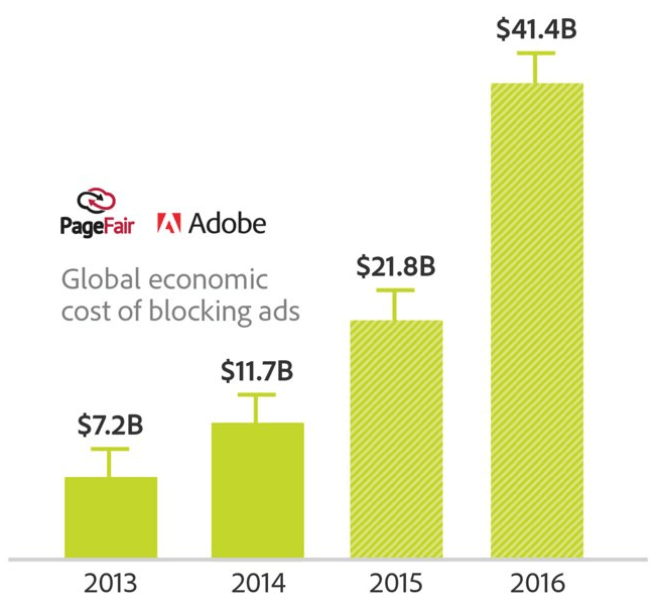
 Whats-all-this-fuss-about-ad-blocki...
Whats-all-this-fuss-about-ad-blocki... 
We’ve all read in recent weeks about the advent of ad blocking software and how it’s impacting the world of digital advertising. It’s been reported that nearly 10% of all US and about 12% of international web users actually have ad blocking software installed on their computers. On the one hand, users have the liberty of deciding whether they want to see an ad unit if they are consuming content on a publisher site — let’s all agree that ads can get sometimes be annoying and distracting — but, on the other hand, publishers are losing out on potential revenue stream if their users are using ad blocking software to stop potential ads from showing. From an advertiser’s point of view, should they be worried that their placements are not being shown? Is the consumer really winning by blocking ads? And in the case that quality and premium content is not made freely to them, are they prepared to pay? These are the questions that are confronting advertisers, publishers and consumers alike.
The Advertiser Lens
Advertisers are wondering what percentage of their ad buys are being blocked as some reports claim as much as 10% of all US web traffic and 12% of all global traffic are being blocked by ad blocking software installed on consumer’s web browser. It’s also safe to say that if advertiser ads are being blocked, they will not be charged if the impression is not served, nor will they need to pay for the ad-serving fee. But nonetheless, they may not be reaching their targeted demographic audience if this audience is blocking the advertiser’s ads.
Advertisers should therefore focus on quality media sources as a means of reaching their targeted audience. These media sources tend to generate better quality content and thus consumers are less likely to want to block any ads on the sites.
The Publisher Lens
Publishers can be impacted the most when it comes to consumers using ad blocking software and will lose out on the potential revenue stream that could have been generated if the ads were not blocked. Below is a chart from PageFair/Adobe highlighting how much revenues publishers are losing each year. Publishers are now coming up with unique digital advertising products so that ad blocking software will not be impacted. On a separate note, not all paid search results are affected by ad blocking software, so major vendors need not worry about losing revenue from these ad blocking tactics.
 Publishers can now think of unique advertising placements, like native placements, which will be harder to block. This doesn’t mean they can’t be blocked altogether as, conceivably, ad blocking software developers are also becoming more sophisticated and developing software that can block even native type placements.
Publishers can now think of unique advertising placements, like native placements, which will be harder to block. This doesn’t mean they can’t be blocked altogether as, conceivably, ad blocking software developers are also becoming more sophisticated and developing software that can block even native type placements.
The Consumer Lens
So what really caused the sudden advent of ad blocking usage among consumers? The main reason lies with the fact that publishers are generating a large amount of poor quality content in their bid to drive more impression share and, in turn, generate more revenue. This has somewhat backfired as consumers are inundated with display advertising banners plastered all over the webpages. Consumers are revolting by installing ad blocking software as they deem the ads to be a nuisance when they’re consuming content, in addition to causing webpages to load more slowly.
As for consumers… just bear in mind that nothing is free. If you want to block ads so that you can continue to complete that Buzzfeed quiz at lightning speed, this may lead to publishers cutting back on free and quality content, perhaps even forcing a pay wall to access.
Overblown Hype
At the end of the day, ad blocking is going to be part and parcel of our lives; be it for advertisers, publishers or consumers. There’ll always be consumers who dislike ads in their digital lives, but it’s still up to publishers to create compelling content that can somehow turn a profit. Likewise, it’s also important for advertisers to buy media on reliable media sources and not through low-quality content farms. The industry as a whole will adjust and adapt to the changing tides of ad blocking. So should the entire digital media ecosystem freak out over this hysteria or is it overblown? You be the judge.
Images via Daniel Oines and Gary dr
Contact DAC today to find out more!



